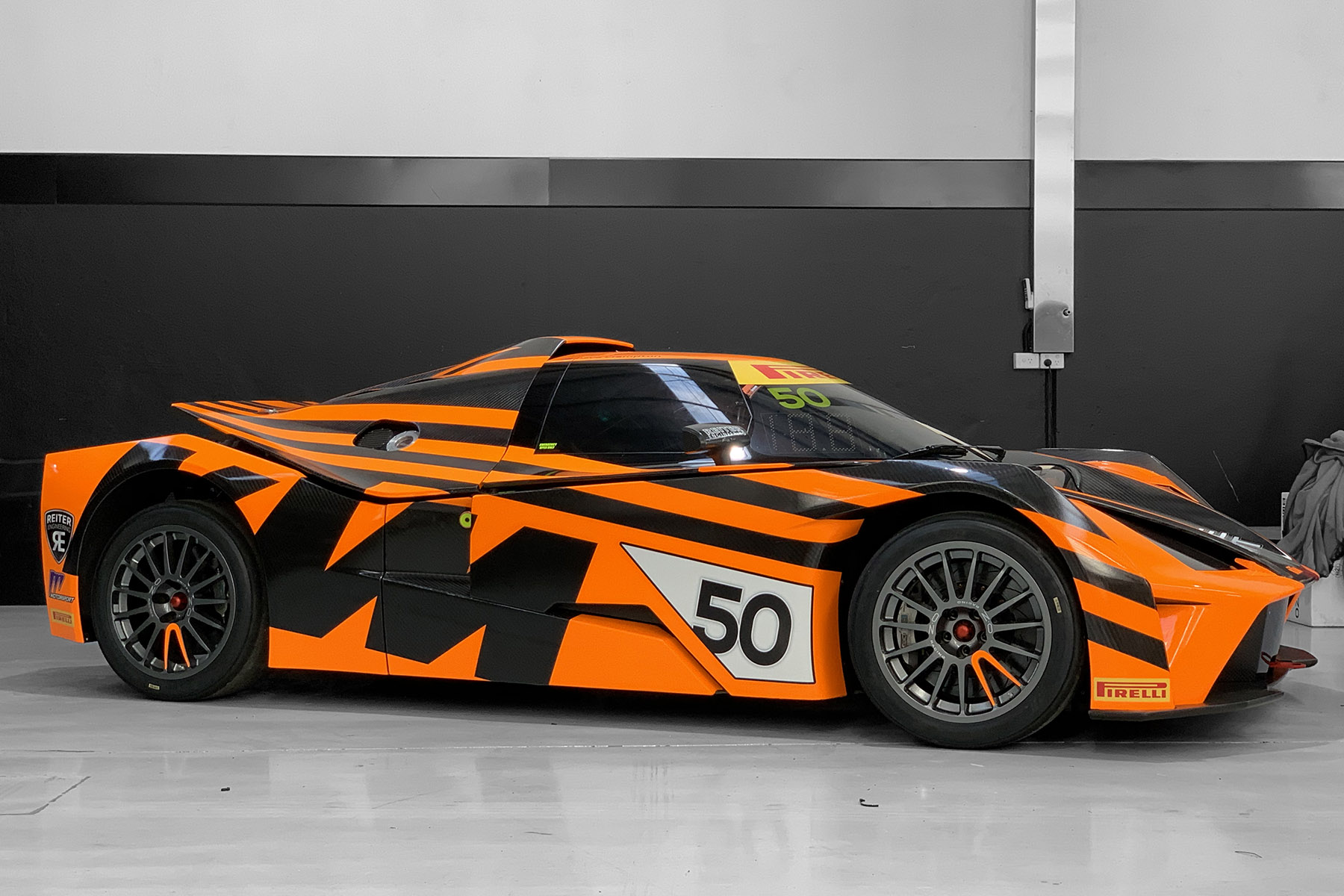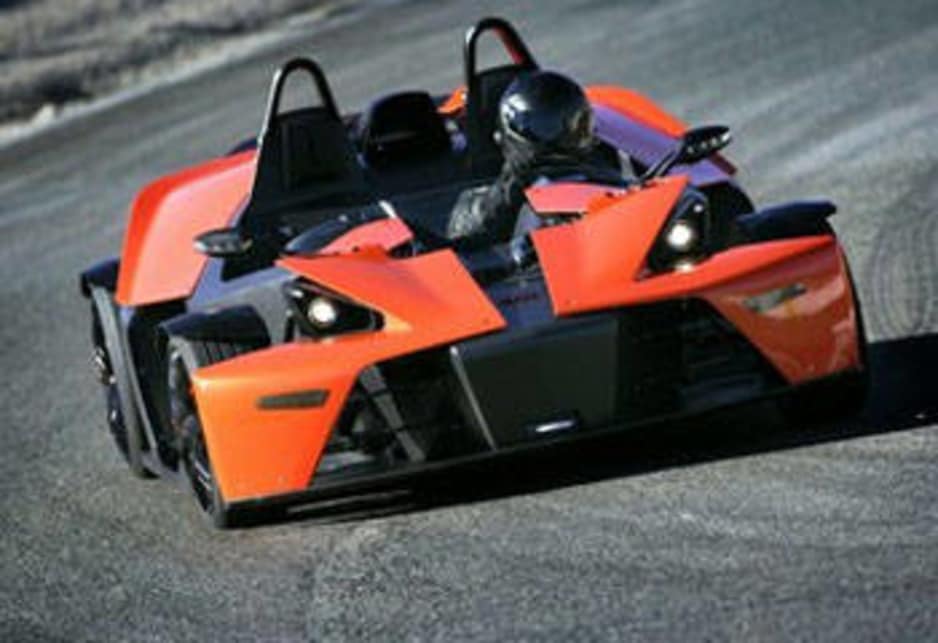


Aside from the steel subframe at the rear carrying the engine, transmission and rear suspension, the GT‑XR is made almost entirely from carbonfibre. The whole glasshouse rises smoothly and silently upwards and forwards, revealing the cockpit set into the carbonfibre monocoque. Plipping the keyfob or pulling the door handle triggers the GT‑XR’s party piece, its electric canopy. But, happily, it saw the enforced engine change not as a dead end but an opportunity. That could have been the end of the X‑Bow story, had the KTM board decided to call a halt to its car division – a relative minnow compared with its separate motorcycle companies and wider portfolio. The new X‑Bow GT‑XR’s story starts back in 2018, when the four-cylinder turbocharged Audi engine that powered the first-generation X‑Bow, launched in 2008, fell foul of tightening emissions regulations for homologation. ‘Now we are really in the adult sphere with this car.’ ‘Lots of customers of the original X‑Bow told us: “It’s a fun car, but it’s a toy – I want a more ‘adult’ car,”’ product manager Lukas Barth tells evo as he shows us around the sophisticated X‑Bow production line in Graz, Austria. > Caterham 420 Cup review – pure driving pleasure And it’s evolved from the original, minimal X‑Bow into something bigger, more potent – more supercar than sports car.

Even the hardest of hardcore sports cars are generally designed as road cars first and foremost, and if they do wind up on a GT racing grid at Spa or Silverstone, it’s usually in a re-engineered, evolutionary form (or, depending on how relaxed the regs are, a clean-sheet design with only a passing resemblance to a distant road-going cousin).īut the wild-looking KTM X‑Bow GT‑XR you can see here really was designed as a racing car first – and subsequently house-trained into a productionised road car rather than the other way round. And like most clichés, it’s rarely true, of course. 'Racing car for the road.’ It’s one of the great automotive clichés.


 0 kommentar(er)
0 kommentar(er)
